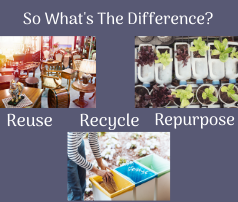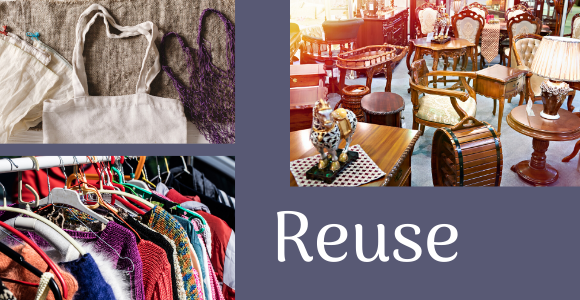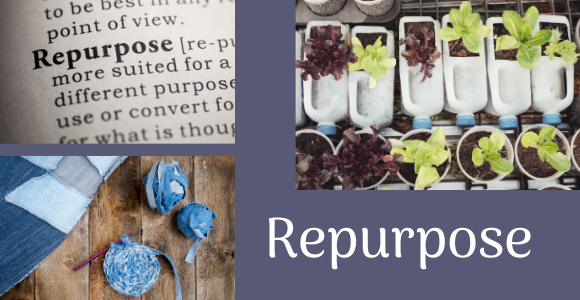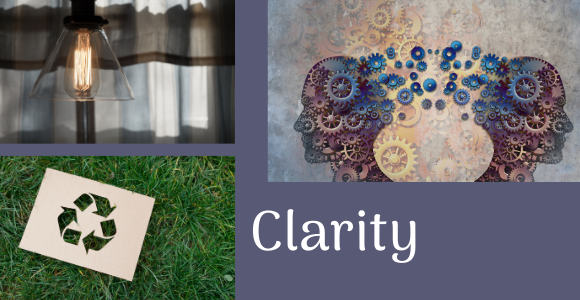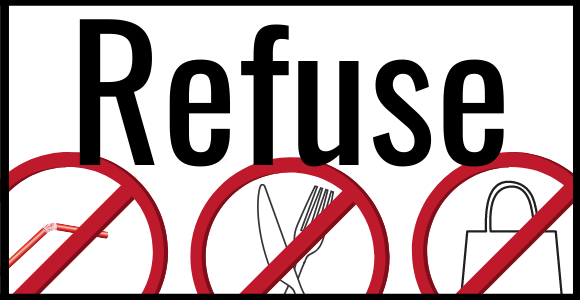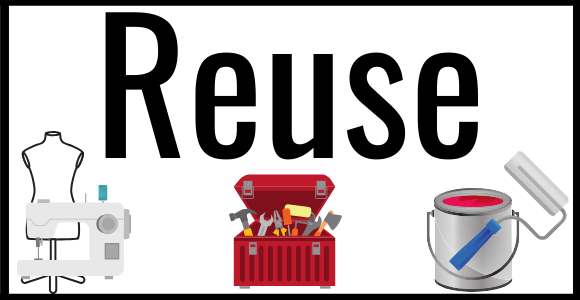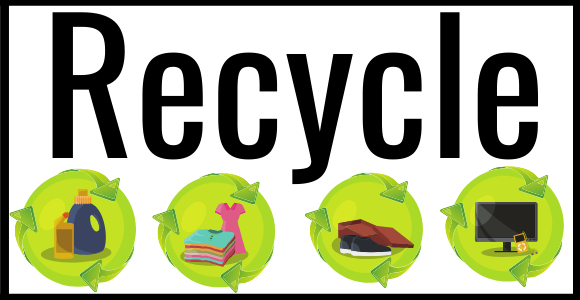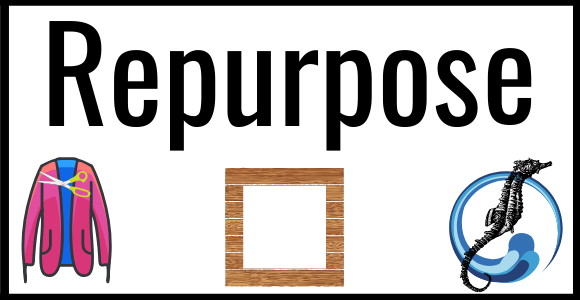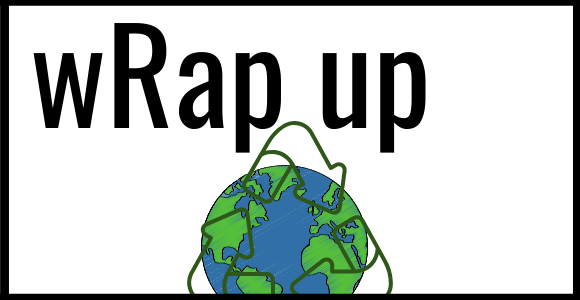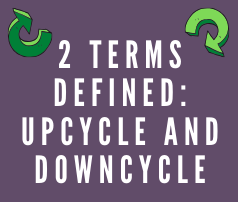 Green Benefits
Green Benefits
2 Terms Defined: Upcycle and Downcycle
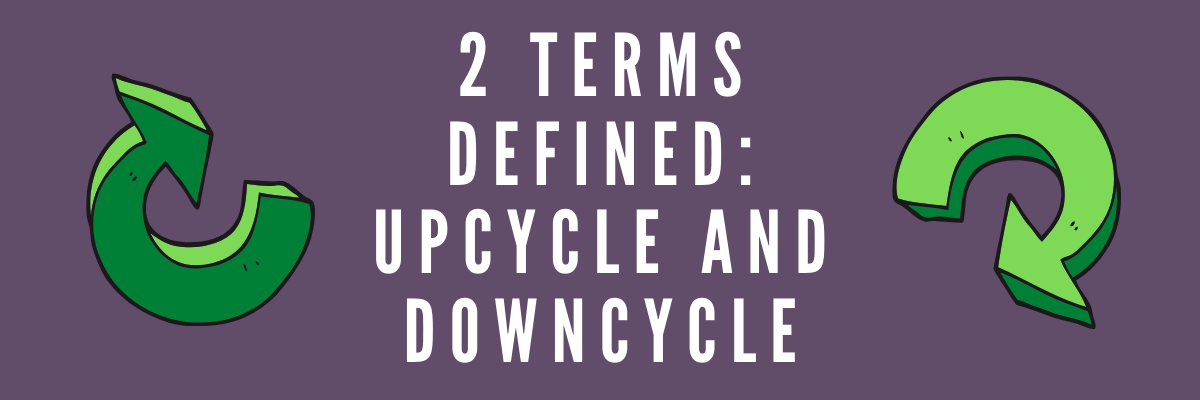
As we have spent the past few months defining and differentiating terms such as reuse, recycle and repurpose, there are two other terms at the forefront of the conversation about circular fashion and textile recycling: upcycle and downcycle. But what do those two terms mean exactly? Where do they fit into this conversation and how do they relate to our work at Chicago Textile Recycling?
Upcycle
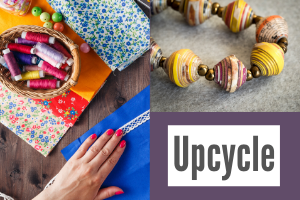 Merriam-Webster online defines upcycle as “to recycle (something) in such a way that the resulting product is of a higher value than the original item.” The website pinterest is full of ideas for upcycling different products that you own. Craft fairs are notorious for selling upcycled products.
Merriam-Webster online defines upcycle as “to recycle (something) in such a way that the resulting product is of a higher value than the original item.” The website pinterest is full of ideas for upcycling different products that you own. Craft fairs are notorious for selling upcycled products.
Upcycling is making something new of higher value from the material without having to do a complete recreation of raw material. Examples include: trash art, seatbelt purses, leather bags made from old leather jackets, etc.
“As of March 2017, some 21 percent of respondents stated that they regularly upcycled used materials.” (statistic found here)
But how does upcycle differ from recycle, reuse and repurpose? As we shared about in this previous blog post, reuse is the simple reuse of something, such as passing along old baby clothes to a pregnant friend, so in comparison to upcycle, reuse would not involve recycling or increasing the value.
Recycling involves a product being reprocessed into a new raw material by grinding up the old material, which also wouldn’t be the case for upcycling, so although many descriptions and definitions of the term upcycle include the term recycle, there is no new raw material being created in the case of upcycling.
The repurposing of an item would be the closest in definition to upcycling, with the difference being in its value at the end of the process, and its possibility of slight alterations in creating the new product. If the new product increases in value through the process, it has been upcycled. If it doesn’t, it has been repurposed.
Examples
- T-shirt quilts, baby blankets and other “priceless” products made from old clothes
- Purses made out of license plates or capri sun juice pouches or seatbelts
- Necklaces made out of balled up magazine pages
- Trash art
- Leather bags made from old leather jackets
Benefits
- Reducing waste sent to landfills
- Reduces air pollution, water pollution, greenhouse gas emissions
- Reduces need for raw materials
- Fostering local or artisanal work
- One of a kind items
- Source of income for artisan
Downcycle
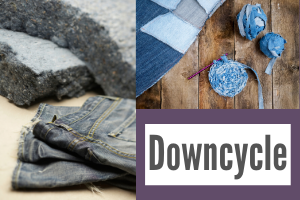 In comparison to upcycle, Merriam-Webster defines downcycle as “to recycle (something) in such a way that the resulting product is of a lower value than the original item.” As stated before, this process is most closely related to repurposing, but in this case, the new item would decrease in value. Again, downcycling is different than reuse in that it decreases in value and it takes on a new form.
In comparison to upcycle, Merriam-Webster defines downcycle as “to recycle (something) in such a way that the resulting product is of a lower value than the original item.” As stated before, this process is most closely related to repurposing, but in this case, the new item would decrease in value. Again, downcycling is different than reuse in that it decreases in value and it takes on a new form.
Downcycling is making something new of lesser value without having to do a complete recreation of raw material as recycling would. The obvious example of downcycling at CTR is taking a shirt and cutting it into wiping rags.
Examples
- Turning recycled textiles into fiber content for car seat or sofa stuffing and car insulation
- Using old jeans to make home insulation
- Turning textiles into rag rugs
- Cutting a shirt into wiping rags
Benefits
- Reducing waste sent to landfills
- Reduces air pollution, water pollution, greenhouse gas emissions
- Reduces need for raw materials
- Allows products to be used to their fullest extent
Where CTR Fits In
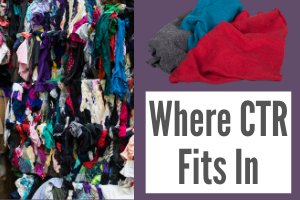 Chicago Textile Recycling, as a part of its parent company Wipeco Inc., collects used textiles to do one of three things: 1) sell for reuse, 2) downcycle into wiping rags in our factory which we then sell to janitorial supply buyers, or 3) sell to other companies to downcycle into fiber content. Because the wiping rags we sell have less value than the sheets, towels and clothes they were originally, it is considered downcycling. These three uses of recycled textiles are currently the best ways to keep textiles out of landfills, so we are playing a major part in helping to reduce landfill waste, reduce greenhouse emissions and help take care of our planet for future generations.
Chicago Textile Recycling, as a part of its parent company Wipeco Inc., collects used textiles to do one of three things: 1) sell for reuse, 2) downcycle into wiping rags in our factory which we then sell to janitorial supply buyers, or 3) sell to other companies to downcycle into fiber content. Because the wiping rags we sell have less value than the sheets, towels and clothes they were originally, it is considered downcycling. These three uses of recycled textiles are currently the best ways to keep textiles out of landfills, so we are playing a major part in helping to reduce landfill waste, reduce greenhouse emissions and help take care of our planet for future generations.
For further information about our company or to find the location of your closest CTR bin or partner resale store, please contact us.
